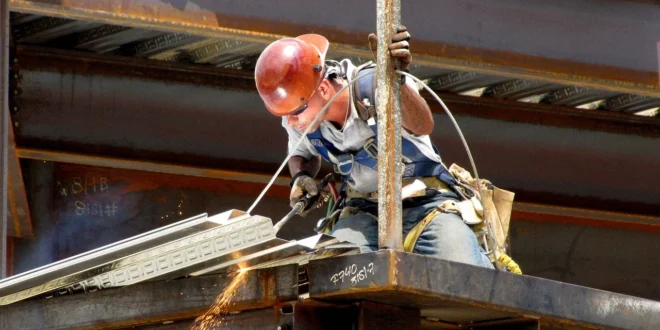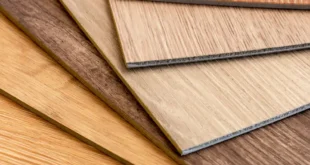Shipbuilding is a complex and meticulous process that requires the careful joining of various steel components. Welding techniques play a crucial role in connecting steel plates to create the structural framework of a ship. In this blog post, we will explore the welding techniques commonly used in shipbuilding and discuss their importance in ensuring the integrity and strength of the vessel.
Importance of Welding in Shipbuilding
Welding is a fundamental process in shipbuilding, as it allows for the efficient joining of steel plates and structures, providing strength, rigidity, and durability to the vessel. The quality of welds directly impacts the structural integrity of the ship and its ability to withstand the extreme forces encountered at sea. Therefore, employing proper welding techniques is essential to ensure the safety, performance, and longevity of the ship.
Common Welding Techniques in Shipbuilding
Various welding techniques are employed in shipbuilding, depending on the specific requirements and characteristics of the project. Some of the most common welding techniques used to connect steel plates in shipbuilding include:
1. Arc Welding
Arc welding is one of the most widely used welding processes in shipbuilding. It involves creating an electric arc between a consumable electrode and the base metal, which melts the electrode and forms a weld joint upon solidification. Two common types of arc welding used in shipbuilding are:
- Shielded Metal Arc Welding (SMAW): Also known as stick welding, SMAW employs a coated electrode that provides a shielding gas to protect the weld pool from atmospheric contamination. SMAW is versatile and can be used in various shipbuilding applications.
- Gas Metal Arc Welding (GMAW): GMAW, also known as MIG/MAG welding, uses a continuous wire electrode and a shielding gas to protect the weld pool. GMAW is commonly used in shipbuilding due to its high welding speed and precision.
2. Gas Tungsten Arc Welding (GTAW)
Gas Tungsten Arc Welding, also known as TIG welding, uses a non-consumable tungsten electrode and an inert gas for shielding. GTAW is particularly suitable for welding thin steel plates and critical joints requiring high-quality welds. It provides excellent control over the welding process and produces clean, precise welds.
3. Submerged Arc Welding (SAW)
Submerged Arc Welding involves feeding a consumable electrode and a flux layer beneath a blanket of granular flux. The arc is submerged in the flux, protecting the weld pool from atmospheric contamination. SAW is commonly used for longitudinal and circumferential welding of thick steel plates in shipbuilding, as it offers high deposition rates and deep penetration.
4. Electroslag Welding (ESW)
Electroslag Welding is a specialized welding technique used for vertical seams in shipbuilding, such as hull plates. It utilizes a consumable electrode and a molten slag pool that shields the arc and facilitates the welding process. ESW is known for its high productivity and ability to produce strong, high-quality welds with minimal distortion.
5. Bolt Action Welding
Bolt actions, while not a traditional welding method, are frequently used to secure steel plates in shipbuilding before the welding process begins. This technique involves the insertion of high-strength bolts through aligned holes in the steel plates. The bolts are then tightened to hold the plates in a precise alignment. Once the bolt action is completed, welding can proceed. This method is particularly useful in maintaining structural integrity during the construction process and ensuring the accuracy of weld placement. Although not a welding technique itself, bolt action is a crucial aspect of the overall welding process in shipbuilding.
Ensuring Quality Welds in Shipbuilding
To ensure the production of high-quality welds in shipbuilding, several factors need to be considered:
1. Welding Procedure Qualification
Shipbuilders follow established welding procedure specifications (WPS) to ensure consistency and quality in the welding process. WPS includes details such as pre-weld preparation, welding parameters, electrode selections, and post-weld treatments. These procedures are qualified through rigorous testing to verify their suitability for specific shipbuilding applications.
2. Skilled Welders and Inspectors
Qualified and experienced welders play a critical role in shipbuilding. Their expertise ensures the proper execution of welding techniques and adherence to welding specifications. Skilled inspectors also play a vital role in monitoring and inspecting welds to ensure compliance with industry standards and specifications.
3. Non-Destructive Testing (NDT)
Non-destructive testing techniques, such as visual inspection, ultrasonic testing, radiography, and magnetic particle testing, are employed to detect any welding defects or discontinuities. NDT helps identify potential weaknesses in welds, allowing for timely repairs and ensuring the integrity of the ship’s structure.
4. Quality Assurance and Documentation
Shipbuilding projects require robust quality assurance systems to ensure that all welding activities are performed according to established procedures and standards. Documentation of welding procedures, welder qualifications, inspection reports, and material traceability is crucial for maintaining quality control and ensuring the long-term integrity of the ship.
Conclusion
Welding techniques play a vital role in shipbuilding, enabling the efficient and reliable joining of steel plates to create the structural framework of a vessel. Employing proper welding techniques, qualified welders, and rigorous quality control measures are essential to ensure the safety, performance, and longevity of ships. As technology advances, shipbuilders continue to explore new welding techniques that provide even stronger and more durable connections, further enhancing the safety and reliability of ships at sea.
Was this article helpful to you? If so, make sure to check out our blog for more useful information and resources.
 SlushWeb Bringing Facts to Light
SlushWeb Bringing Facts to Light



